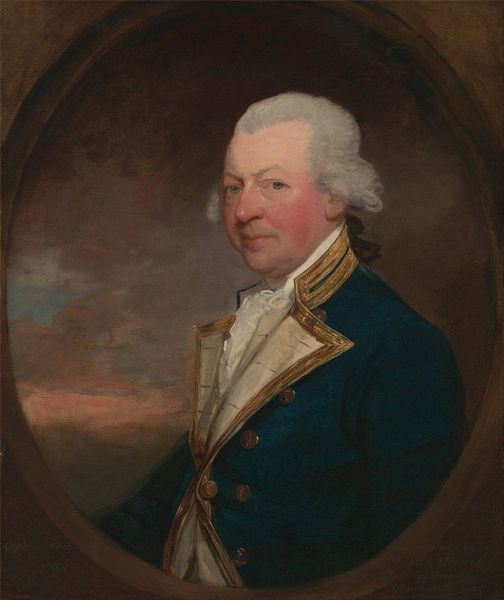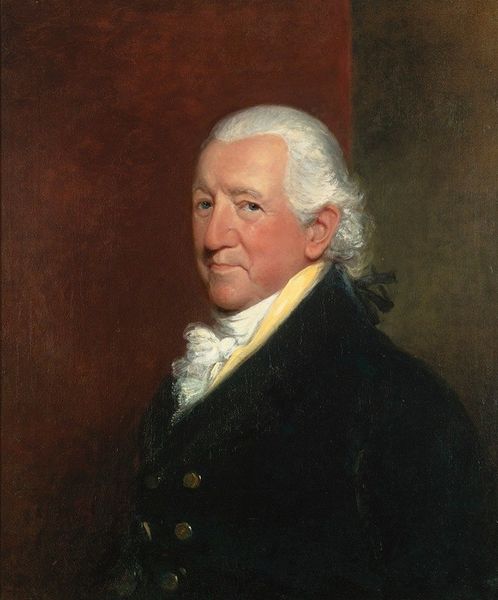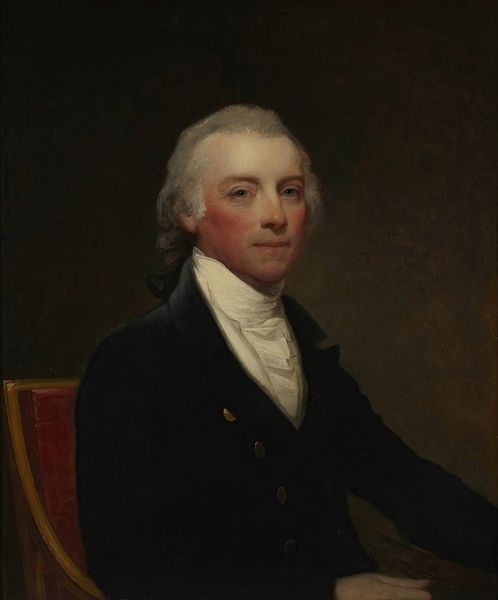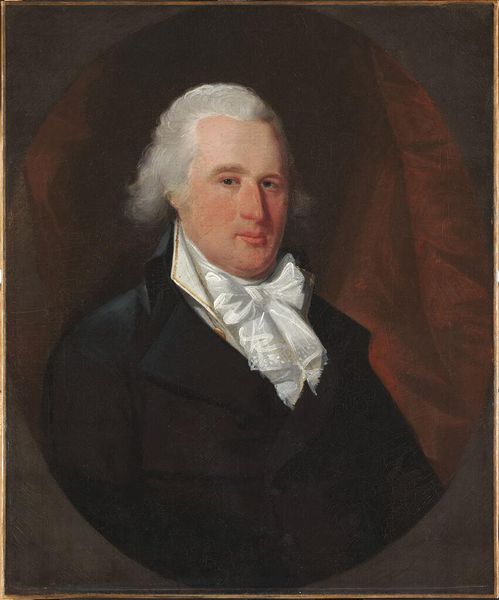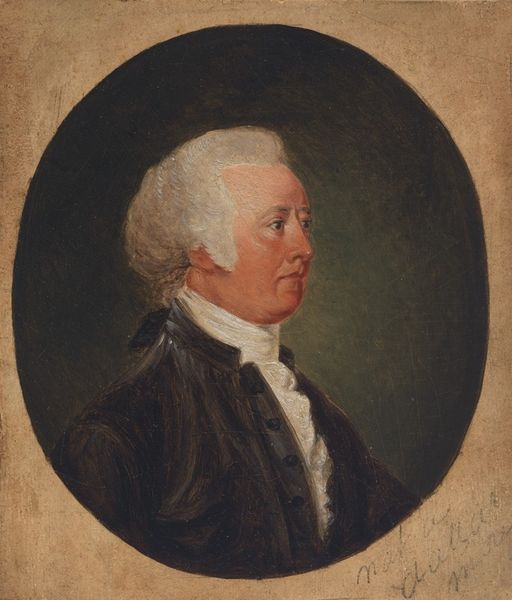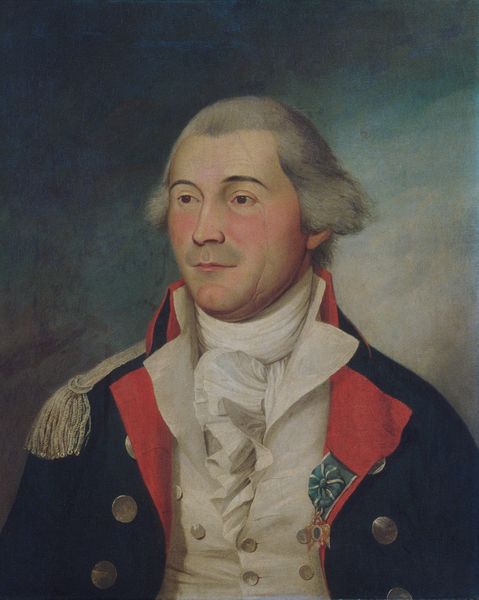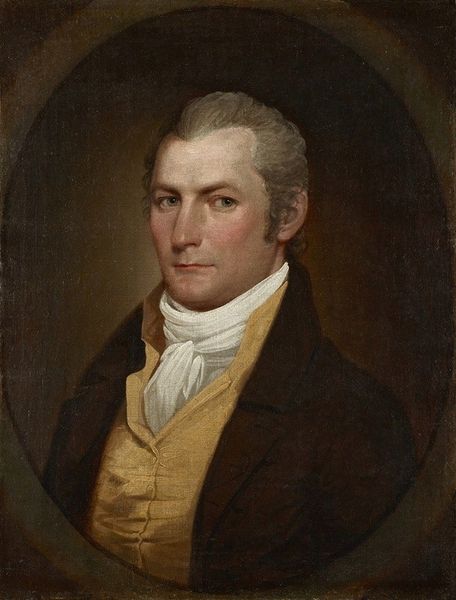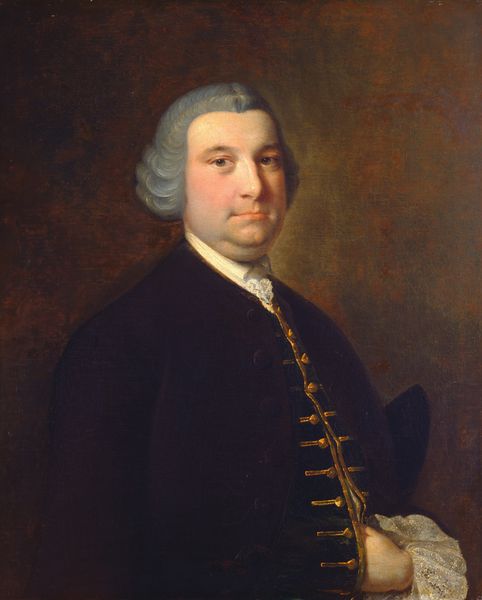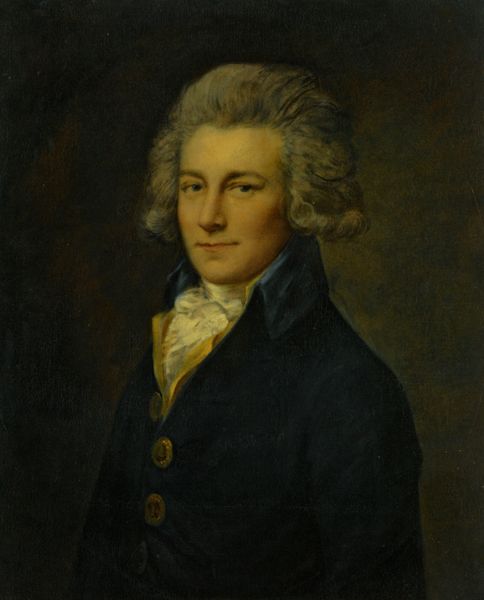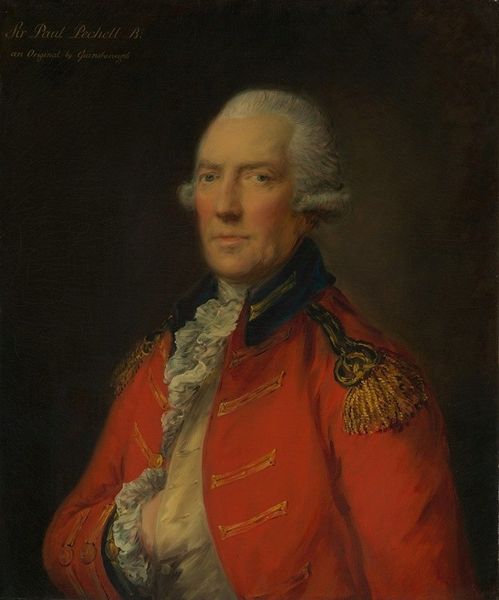
#
figurative
#
portrait reference
#
portrait head and shoulder
#
animal portrait
#
animal drawing portrait
#
portrait drawing
#
facial portrait
#
portrait art
#
fine art portrait
#
celebrity portrait
#
digital portrait
Copyright: Public Domain: Artvee
Curator: Gilbert Stuart painted this portrait of James DeLancey around 1785. DeLancey, a prominent Loyalist during the American Revolution, held significant positions in colonial New York. Editor: The painting strikes me as quite traditional. The tight oval composition, the way the light catches the folds of his cravat... very stately and reserved. Curator: Absolutely. Stuart was a master of capturing likeness, but also of projecting status. DeLancey, despite backing the losing side, clearly wanted to be remembered as a man of importance. The flamboyant red lining of his coat, the crisp white ruffles—it’s all very deliberate. Editor: The colors are definitely working to convey that message. The dark navy, the gold buttons...it creates a visually compelling, if slightly formal, arrangement. Though, the rather rosy complexion does give him a somewhat warmer demeanor. It almost softens the sense of power. Curator: His coloring could simply be capturing the reality of his appearance, or, potentially, Stuart’s approach. Stuart had an interesting relationship with his subjects—sometimes flattering, sometimes subtly revealing flaws. What does this blend say about attitudes toward Loyalists at the time? They'd lost, yet many remained part of the social fabric. Editor: It's subtle, that's for sure. Stuart has certainly constructed an image meant for posterity. Curator: And consider the lack of background detail. It keeps our focus entirely on DeLancey, forcing us to confront his identity and legacy. Editor: Yes, everything down to the slightly powdered wig works towards this image of a dignified gentleman, not merely defined by the political turmoil of his time, but perhaps transcending it. Curator: It's a complex portrait that reveals a lot about Stuart's mastery of his craft and also about the politics of memory after the Revolution. Editor: Indeed. It's a reminder that even in seemingly straightforward portraiture, there are always layers of meaning and artistic intent to uncover.
Comments
No comments
Be the first to comment and join the conversation on the ultimate creative platform.
